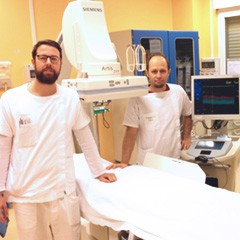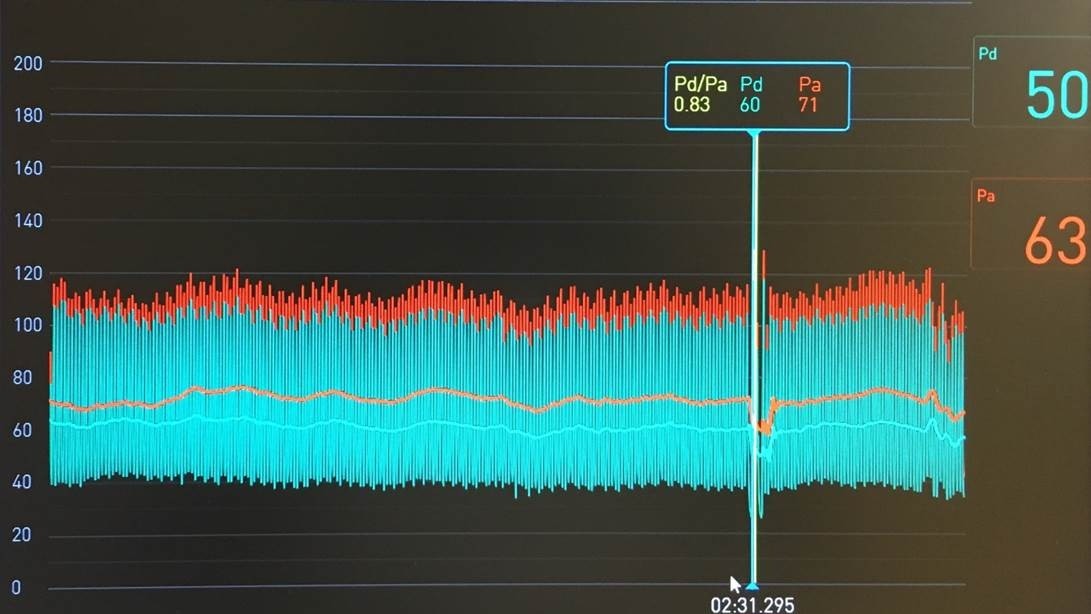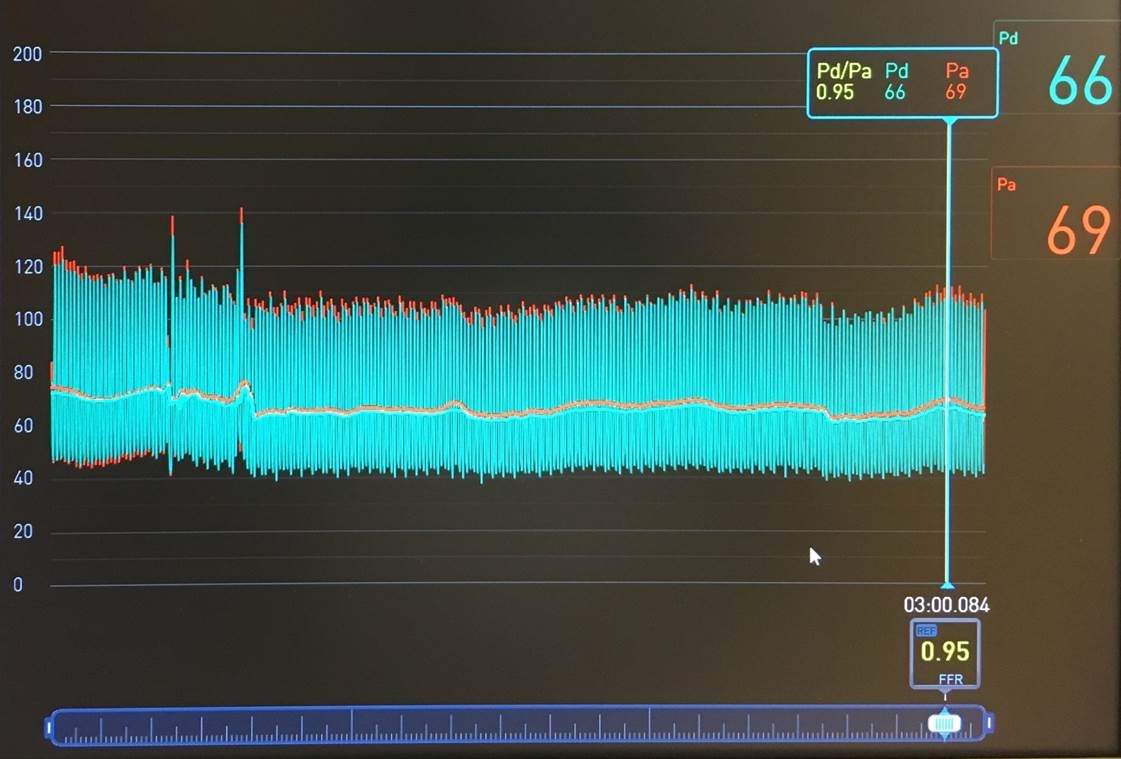Workhorse-like FFR wire assesses complex case with 90° angle
CASE STUDY
Prof. Gianluca Campo and Dr. Matteo Tebaldi from the Cardiovascular Institute, Azienda Ospedaliera Universitaria di Ferrara, Italy
Patient History
- Female 76 years old with hypertension & diabetes mellitus
- Renal dysfunction (serum creatinine 2 mg/dl)
- Previous coronary angiography (5 years ago) for stable angina: not significant stenosis with indication to optimal medical therapy (not pictured)
- Recent admission to surgical department for liver resection (high risk surgery > 5%)
- Cardiovascular assessment pre surgery resulted in: functional capacity < 4 mets and chest pain during intense effort
- Indication to perform coronary angiography
Case Challenges
- Significant angulation and tortuosity: may be difficult to deliver FFR wire
- “Oculo-stenotic” assessment may determine PCI on both obtuse marginal (OM) and left anterior descending and therefore DAPT are needed
Coronary Angiography Performed
- Note: Access to first OM was difficult at a 90º angle. This was complicated by an additional stenosis immediately after the ostium
- Second obtuse marginal: no change from the previous examination
- LAD showed a 65% stenosis in the distal segment
COMETTM FFR Pressure Guidewire Characteristics
- Asahi co-developed for true workhorse capabilities
- Free rotation while steering and reliable re-connection
- Optical pressure sensor
FFR of LAD
- The COMETTM FFR wire was delivered down the LAD and gives an FFR value of 0.83
- No stents placed
FFR of Second Obtuse Marginal
- COMETTM FFR wire delivers down a highly tortuous vessel with 90º angle
Key learnings
This case highlights:
- The need to have available new, modern FFR guide wires that allow the operator to analyse complex, tortuous vessels with angulation.
- In this case FFR helped the operator avoid unnecessary PCI and DAPT treatment thereby keeping the surgical option open if deemed necessary in the future.
Join Our Complex PCI Community
Education & Training
Educare offers a comprehensive suite of education and training programs for Complex PCI.
Learn MoreResources
Download Case Study
























